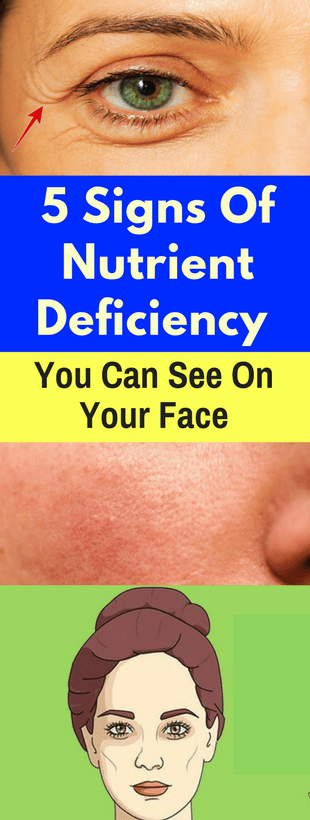Your skin is a mirror of your internal health, often reflecting signs of nutrient deficiencies or imbalances. While a balanced diet is crucial for overall well-being, certain deficiencies can manifest visibly on your face, providing valuable clues about your nutritional status. In this guide, we’ll explore five common signs of nutrient deficiency that you can observe on your face, empowering you to recognize and address potential deficiencies for optimal skin health and overall vitality.
- Pale or Yellowish Complexion:
- A pale or yellowish complexion can indicate deficiencies in essential nutrients such as iron or vitamin B12.
- Iron deficiency anemia can lead to a pale or sallow complexion due to decreased oxygen delivery to the skin.
- Vitamin B12 deficiency may cause a yellowish tint to the skin, known as jaundice, due to impaired red blood cell production.
- Dry, Flaky Skin:
- Dry, flaky skin may be a sign of various nutrient deficiencies, including vitamin E, vitamin C, and essential fatty acids.
- Vitamin E acts as a potent antioxidant, protecting the skin from oxidative damage and maintaining moisture levels.
- Vitamin C is essential for collagen synthesis and skin hydration, and its deficiency can lead to dryness and rough texture.
- Essential fatty acids, such as omega-3 and omega-6, play a crucial role in maintaining the skin’s lipid barrier and preventing moisture loss.
- Cracks or Sores at the Corners of the Mouth:
- Cracks or sores at the corners of the mouth, known as angular cheilitis, can indicate deficiencies in B vitamins, particularly riboflavin (vitamin B2) and niacin (vitamin B3).
- Riboflavin deficiency can lead to inflammation and cracking of the skin at the corners of the mouth, along with other symptoms such as sore throat and fatigue.
- Niacin deficiency may cause a similar presentation, with angular cheilitis often accompanied by a reddish, swollen tongue and digestive issues.
- Pale or Reddish Bumps on the Skin:
- Pale or reddish bumps on the skin, especially on the cheeks and upper arms, may indicate deficiencies in essential fatty acids or vitamin A.
- Essential fatty acid deficiencies can lead to a condition called keratosis pilaris, characterized by small, rough bumps on the skin caused by the buildup of keratin.
- Vitamin A deficiency may also contribute to keratosis pilaris, as vitamin A plays a crucial role in regulating skin cell turnover and preventing the accumulation of dead skin cells.
- Dull, Lackluster Complexion:
- A dull, lackluster complexion can be a sign of various nutrient deficiencies, including vitamin D, vitamin C, and zinc.
- Vitamin D deficiency may contribute to a dull complexion due to its role in skin cell turnover and repair.
- Vitamin C deficiency can impair collagen synthesis and skin brightness, leading to a lackluster appearance.
- Zinc deficiency may result in delayed wound healing and impaired skin regeneration, contributing to a dull complexion.
Conclusion: Your face can serve as a valuable indicator of your internal health, with certain signs and symptoms reflecting potential nutrient deficiencies. By paying attention to changes in your skin’s appearance and addressing underlying deficiencies through dietary modifications or supplementation, you can support optimal skin health and overall well-being. If you notice persistent or concerning symptoms, consult with a healthcare professional for personalized guidance and treatment.
